What is a Himalayan Persian cat?
Per the Cat Fanciers' Association, a Himalayan is a color division of the Persian cat breed and is described as follows:
Persians, with their luxurious coats and open pansy-like faces are the number one breed in popularity. Their sweet, gentle, personalities blend into most households once they feel secure in their new environment. Creatures of habit, they are most at home in an atmosphere of security and serenity, but with love and reassurance, can easily adapt to the most boisterous of households. Their quiet, melodious voices are pleasant and non-abrasive. They communicate delightfully with their large expressive eyes and make charming pets for all ages. Persians have short heavily boned legs to support their broad, short bodies. They like to have their feet firmly planted and are not given to high jumping and climbing. Playful but never demanding, they love to pose and will drape themselves in a favorite window or chair, enhancing the decor in much the same way as a treasured painting. Persians are tremendously responsive and become a constant source of joy and delight to their owners. Pleasurable as an unexpected sunbeam, their companionship is close and enduring.
Their long flowing coats require an indoor, protected environment. Proper maintenance requires a daily run-through with a metal comb to eliminate the potential drawbacks of tangles and hairballs. An occasional bath, attempted only after a complete comb-through and clipping of the nail tips, will keep the coat clean, healthy and beautiful. It is wise to establish the routine of the bath when they are young. While the white Persian has long been the darling of photographers and advertisers, Persians come in an astonishing number of colors, which are divided into seven color divisions for purposes of competition.
Himalayan Division
The Himalayan is one of the most popular of all Persians. The Himalayan is shown in the following point colors: chocolate, seal, lilac, blue, red, cream tortie, blue-cream, chocolate-tortie, lilac-cream, seal lynx, blue lynx, red lynx, cream lynx, tortie lynx, blue-cream lynx, chocolate lynx, lilac lynx, chocolate-tortie lynx and lilac-cream lynx. Color is restricted to the facial mask and extremities with the body of various shades of white to fawn.
Himalayans were developed by breeding Persians to Siamese to combine the Siamese point coloring with Persian type. After many years of cross breeding they were approved as accepted color variations of Persians. All must have deep vivid blue eyes as eyes other than blue are a disqualification.
Keeping the Persian indoors also keeps it safe from transmission of disease and parasites, as well as the dangers of urban life. With an annual trip to a trusted veterinarian, and good nutrition and care, the Persian can live as a family member for easily 15 years, and some surpassing 20 years. Persian breeders dedicate themselves to breeding healthy cats, availing themselves of the latest in veterinary screening procedures to test for any heritable disease conditions. A well-bred Persian is a hardy and healthy cat and is not more prone to illness and respiratory infections than other breeds. However, the large eyes do mean that a certain amount of tearing is normal, and a daily face wash is recommended.
Usually breeders make kittens available between twelve and sixteen weeks of age. After twelve weeks, kittens have had their basic inoculations and developed the physical and social stability needed for a new environment, showing, or being transported by air. Keeping such a rare treasure indoors, neutering or spaying, providing acceptable surfaces (e.g. scratching posts) for the natural behavior of scratching (CFA disapproves of declawing or tendonectomy surgery) and regular claw trimming are essential elements for maintaining a healthy, long and joyful life. For more information, please contact the Breed Council Secretary for this breed.
Himalayan Cat Colors
The beautiful Himalayan cat is one of the most popular cat breeds. The Himalayan cat colors range from lilac to chocolate lynx and multiple other shades.
Himalayan Colorpoints
Himalayan cats are a colorpoint breed that is considered a color classification of the Persian cat breed. The term color point as it relates to the Himalayan cat with an even and light colored body, but its face and extremities feature a darker coat color. Across the face, there will be a darker "mask-like" shade which will also appear along the length of the tail and the tip of the paws.
When a colorpoint cat is shown, the even color of its body is critical in emphasizing the contrast of its paws, tail, and face. Points are docked for any markings, and, in fact, markings can render a cat ineligible in many cases.
Himalayan Colorpoints
Himalayan cats are considered a color point breed that is a color division of the Persian cat breed.
The term colorpoint translates to a cat with an even and light colored body, with coloring on it’s “points” referring to the head, tail and legs. Across the face, there will be a darker "mask-like" shade which will also appear along the length of the tail and the tip of the paws.
In the Cat Fanciers' Association, the following color point combinations are acceptable. These include:
- Chocolate
- Seal
- Lilac
- Blue
- Red
- Cream tortie
- Blue-cream
- Chocolate-tortie
- Lilac-cream
- Seal lynx
- Blue lynx
- Red lynx
- Cream lynx
- Tortie lynx
- Blue-cream lynx
- Chocolate lynx
- Lilac lynx
- Chocolate-tortie lynx
- Lilac-cream lynx
This information regarding color recognition has been acquired from the Himalayan profile page. Not all Himalayan colors were recognized from the start. There have been breed favorites over the decades, and colors such as lynx points only received recognition in the late '70s and early '80s.
Himalayan Tortie Point Cats
The body of a Himalayan color point is typically ivory or fawn. An ivory body is offset well by flame and tortie shadings. In fact, these color combinations are, according to the CFA, reportedly the "darlings of the Himalayan world". Breeders who enjoy sleek and striking colors generally avoid tortie patterns because they can be chaotic. However, for the Himalayan cat, the tortie colors are apparently an asset. If you are unfamiliar with the term "tortie" in reference to a cat color, the term is the shortened version of "tortoiseshell", which describes the pattern of this shading. Torties possess a mottled hue of certain colors similar to those of a tortoise's shell. This color can be both complicated and interesting, and it adds a certain flair to a colorpoint.
Himalayan Cat Seal Points
Seal point Himalayans have points on their ears, facial mask, legs, paws and tail that are a rich brown color, which is known as "seal." Their paw and nose pads should also be the same brown color. Like other Himalayans the rest of their body is white to a pale fawn color. Seal Point Himalayans were one of the four original colors accepted by CFA in 1957.
Himalayan Cat Lynx Points
Lynx points are amongst the last to receive recognition, and this color combination is even more striking than the tortie. A lynx pattern is striped and tabby. It can present a very interesting contrast against the single-shade body of a Himalayan.
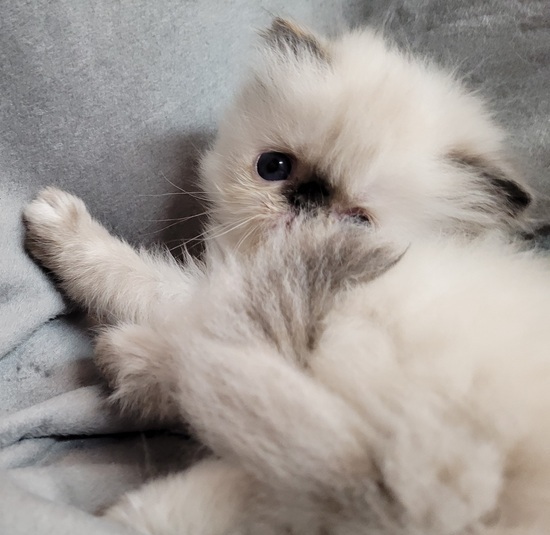
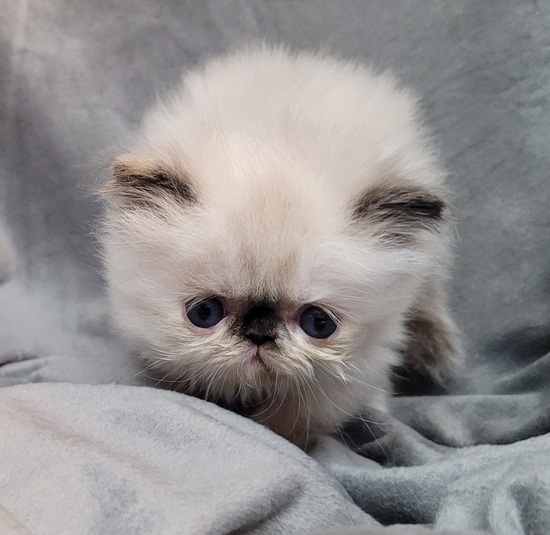

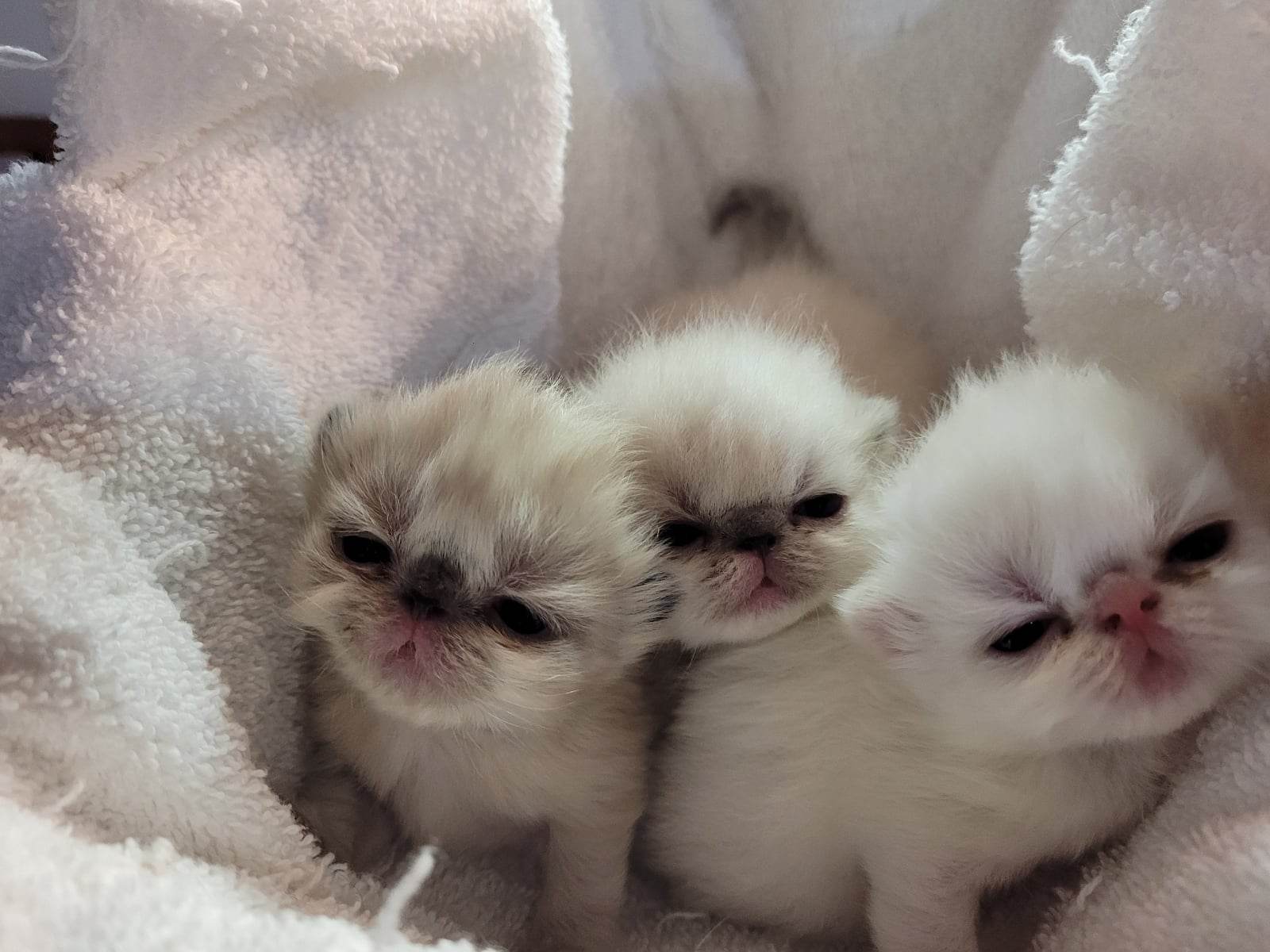
Beautiful litter of Himalayan kittens
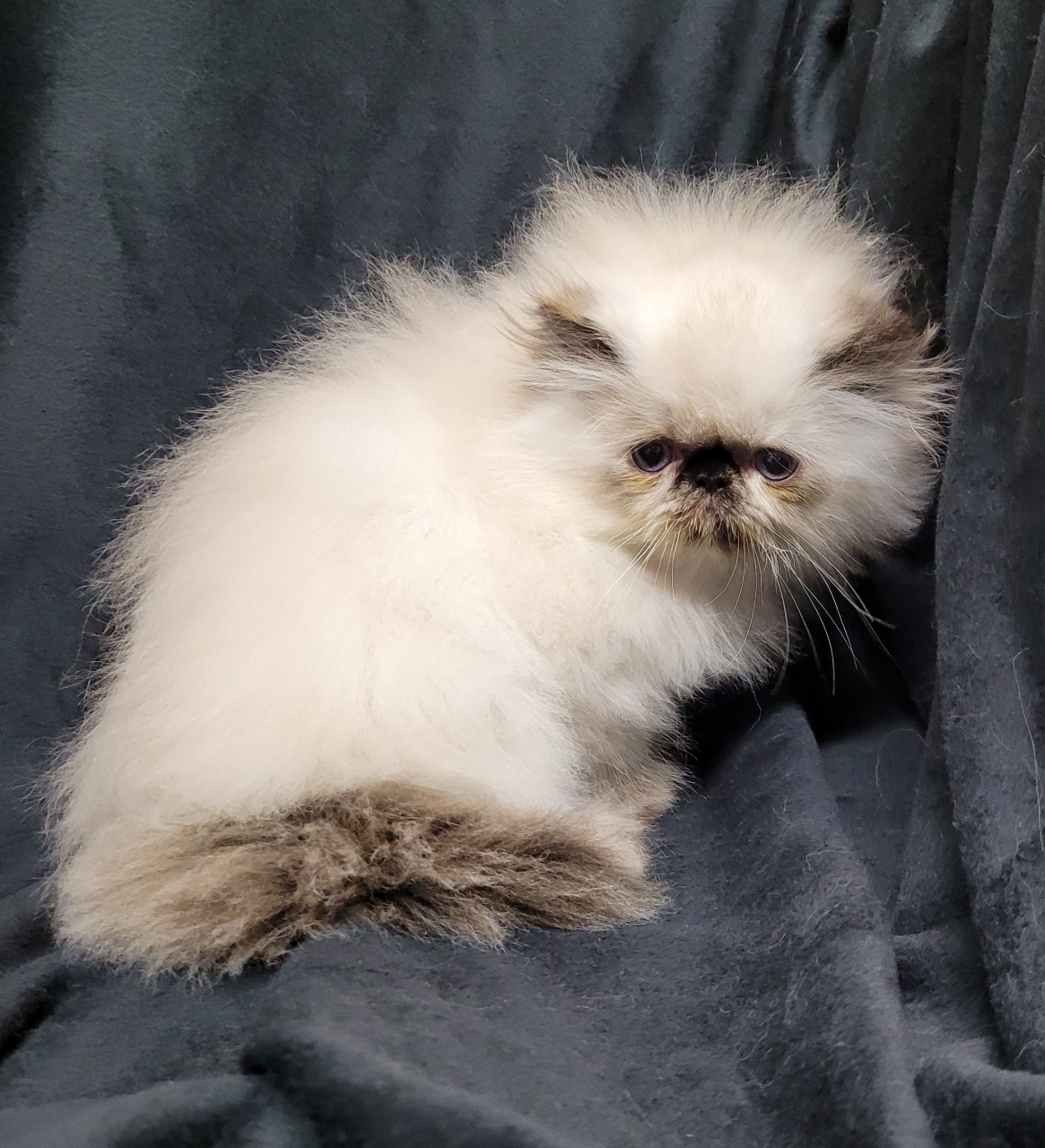
Tortie Point Himalayan kitten
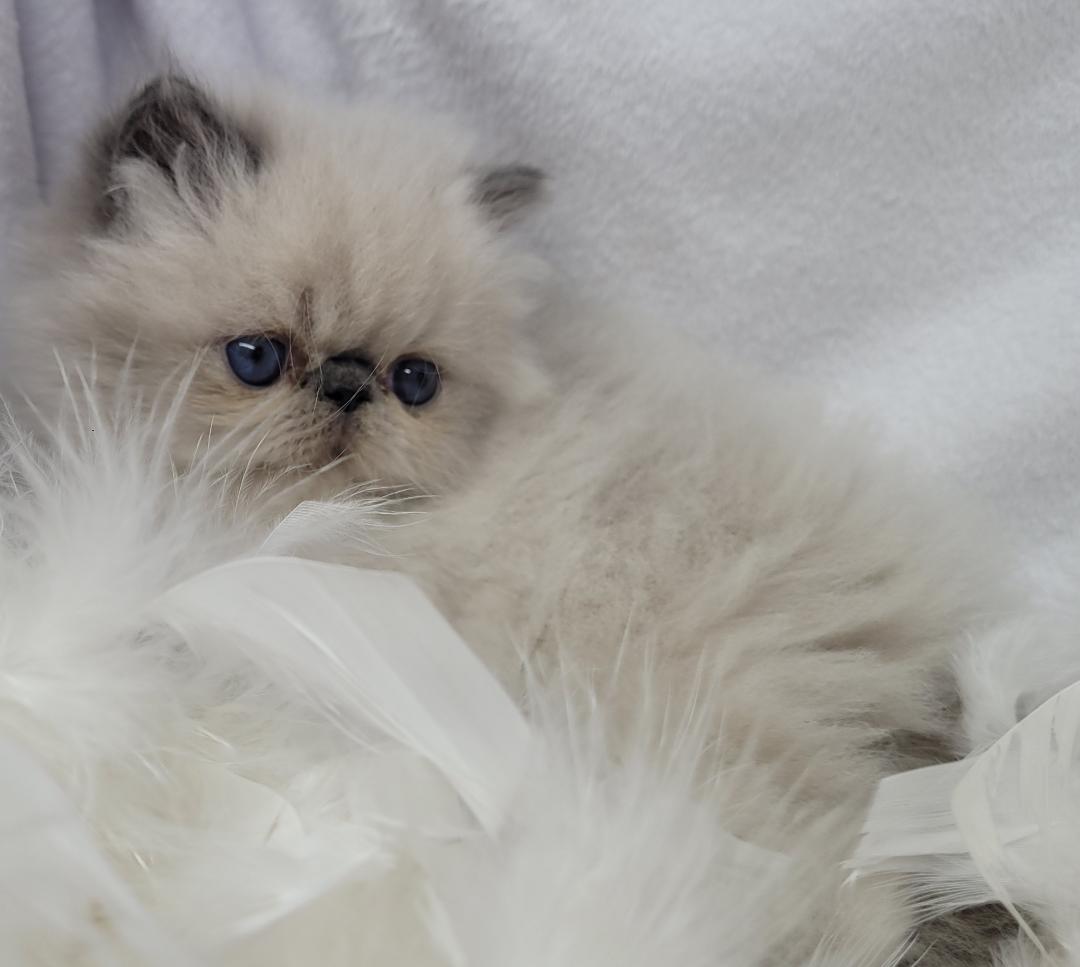
Blue Point Himalayan kitten
